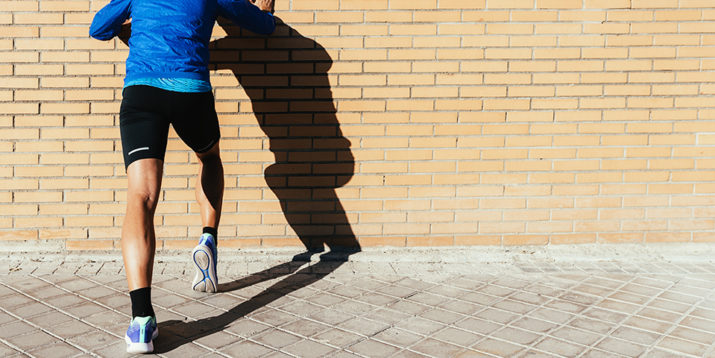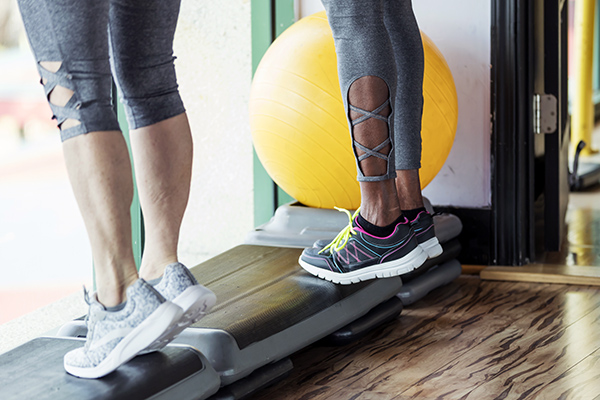6 Ankle Stretches for Flexibility

Ignore ankle stretches at your peril.
While most of us are only too happy to spend big chunks of workout time working showy muscles like the abs, glutes, and arms, almost no one gives the ankles their due.
It’s understandable— ankle work isn’t necessarily sexy.
But if your ankles are tight, pretty soon, you may not have a leg to stand on.
A 2013 study found that people with limited dorsiflexion (capacity to flex the foot towards the shin) suffered from an altered gait that put undue strain on their knee joints.
Another showed that ankle instability led to a reduced range of motion in the knees — a major cause of non-contact injury in sports.
So if you’re prone to knee pain, your problem may be one joint down.
Many people who find lower-body moves like squatting difficult are surprised to find that the problem lies not in their thighs or hips but in their ankles.
By elevating their heels on a board or a pair of weight plates — essentially giving the ankles an additional 30 degrees of movement — they find they’re able to squat more comfortably.

Hate leg day?
A little additional ankle mobility might change your attitude.
But don’t just start stretching away, advises physical therapist Dr. John Rusin.
“Before you start chasing mobility drills to fix your squat, lunge, or running pattern, you first need to see if ankle mobility is really even a problem,” he recommends.
Here’s how to run an ankle function self-check — courtesy of Rusin — and how to specifically address any problems that come up.
How to Check if Your Ankles Are Inflexible
Your ankles are more complex than you might think:
- The calves, for example, are not one but two major muscles (and a few smaller ones).
- The gastrocnemius (the pair of diamond-shaped muscles that form the bulk of your upper calf).
- The soleus (a flatter muscle visible below the gastroc that attaches to the Achilles tendon).
Then there is the ankle joint itself, which allows your foot to move in all three planes of motion: up and down, side-to-side, and rotationally.
To mobilize your ankle properly, you’ll need to pay attention to all of these structures.
First, try this test:
- Holding a dowel or broomstick, assume a half-kneeling stance — right foot standing in front of you, left knee on the floor directly below your left hip, both knees at 90 degrees.
- Measure one hand-width in front of your toes by placing your right fist on the floor in front of the toes of your right foot, pinkie-side touching your toes, thumb side pointing forward.
- Place the end of the dowel on the floor directly behind your fist, and hold the dowel upright.
- With the dowel perfectly vertical and your entire right foot flat on the floor, rock forward, pushing your right knee as close to the dowel as possible.
- If your knee touches the dowel, you PASS. If your knee does NOT touch the dowel, you don’t.
Pass both sides?
Your ankles are flexible enough — though you’ll still want to perform some ankle mobility drills to maintain that healthy range.
One or both ankles a little — or even a lot — constricted? Move on to the next test.
How to Check What’s Causing Tightness in Your Ankle
Next step:
Check and see if the issue is in your soft tissue (muscles, tendons, and ligaments) or in the joint itself.
Here’s how:
- Stand with the ball of your right foot on a stair, box, or aerobic step, and your left foot hanging loosely. Hold onto a railing or other stationary object for balance.
- Keeping your right leg straight and your posture upright, sink into the stretch, dropping your right heel as far as comfortably possible.
- If you feel a stretch in the back of your calf, your inflexibility is caused by tight soft tissue: tendons or muscles (most likely the gastrocnemius). If you feel pinching in the front of your ankle, the issue is in your ankle joint itself.
Repeat the movement with the knee of your standing leg slightly bent and make the same assessment.
This time a stretch in the back of your calf indicates a soft tissue problem (most likely in your soleus or Achilles tendon).
A pinch in the front of your ankle is, again, a joint issue.
Having established where your problem lies — the muscles or the joint — move on to the next step.
Lower-Leg Muscle Stretches
If the tests above indicate that your lower-leg muscles are tight, start each workout with the following moves:
1. Standing Bi-Phasic Gastroc Stretch
- Stand with the ball of your right foot on a stair, box, or aerobic step, and your left foot hanging loosely. Hold onto a railing or other stationary object for balance.
- Keeping your right leg straight and your posture upright, sink into the stretch, dropping your right heel as far as comfortably possible.
- Push through the ball of your foot and come up two or three inches.
- Lower yourself into the stretch position again.
- Continue oscillating in and out of the stretched position for 15-30 seconds.
- Hold the stretched position for an additional 15-30 seconds.
- Repeat the entire sequence on your left side.
2. Standing Bi-Phasic Soleus Stretch
- Stand with the ball of your right foot on a stair, box, or aerobic step, and your left foot hanging loosely. Hold onto a railing or other stationary object for balance.
- Bend your right leg until you feel a mild stretch in your lower calf—the soleus muscles and Achilles tendon.
- Maintaining upright posture, sink into the stretch, dropping your right heel as far as comfortably possible.
- Repeat the sequence above, oscillating in and out of the stretched position for 15-30 seconds, then holding the stretched position for an additional 15-30 seconds.
- Repeat on your left leg.
Ankle Joint Mobilizations
If the tests above determine that the movement restrictions in your ankles are in your joints, perform the following two moves before each workout:
3. Talocrural Joint Self-Mobilization
- Assume a half-kneeling posture with your right foot forward, left knee on a pad behind you, both knees at 90 degrees.
- Place your right palm on top of your right foot, wrapping your thumb and forefinger around the front of your ankle.
- Place the left hand on top of the right, taking a firm hold of your ankle joint.
- Holding your ankle joint securely on the floor, slowly rock forward, pushing your right knee over and past the toes of your right foot.
- Oscillate in and out of the stretched position for 15-30 seconds.
4. 3-Way Ankle Joint Mobilization
- Assume a half-kneeling posture with your right foot forward, left knee on a pad behind you.
- Place both hands on your right knee.
- Keeping your entire right foot flat on the floor, slowly rock forward and to the right as far as comfortably possible, pushing your right knee over and past your pinkie toe.
- Repeat 15-20 times.
- Repeat the move again for another 15-20 reps, this time rocking directly forward, aiming your knee over your big toe.
- Repeat the move one more time for 15-20 reps, rocking your knee forward and 15-20 degrees to the left of your right foot.
Ankle Joint Strength Builders
Finally, regardless of whether your restrictions are soft-tissue-based or joint-based, perform one or both of the following moves to build strength over the new range of motion you’ve created in your ankle joints.
5. Standing Calf Raises
- Stand with the balls of your feet on a stair, box, or aerobic step. Hold onto a railing or other stationary object for balance.
- Slowly lower your heels as far as possible, maximally stretching your calves.
- Rise onto your toes as high as possible, contracting your calves as hard as you can.
- Repeat for up to four sets of 15-20 reps.
- Too easy? Hold a dumbbell in one hand, or perform the move on a standing calf machine.
6. Seated Calf Raises
- Sit in a chair with the balls of your feet resting on a two-inch-thick board, a weight plate, or a pair of books of the same thickness, and a weight plate or a pair of dumbbells on your lap.
- Slowly lower your heels as far as possible, maximally stretching your calves.
- Rise onto your toes as high as possible, contracting your calves as hard as you can.
- Repeat for up to four sets of 15-20 reps.
- Too easy? Add weight to your lap, or perform the move on a seated calf machine.
Looking for more expert fitness tips? Head over to Beachbody On Demand and find out how Beachbody’s at-home workouts, nutrition programs, and online community work together to help you reach your health and fitness goals.
